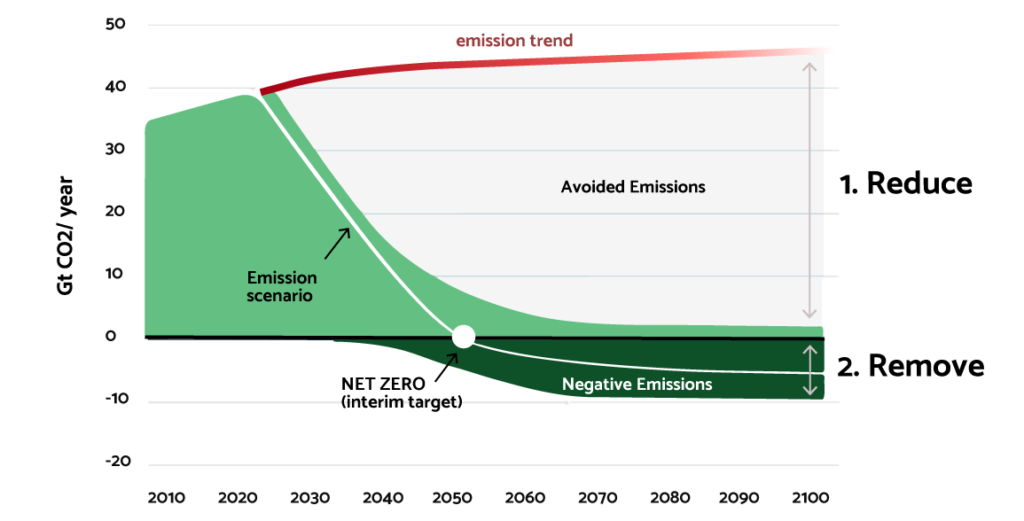Climate Change
Arrhenius AG operates a negative emission technology to mitigate global warming.
CO2 levels in the atmosphere have risen dramatically, largely due to human activities such as burning fossil fuels, deforestation and industrial processes. As a greenhouse gas, CO2 traps heat in the Earth’s atmosphere. As a result, it drives global warming and climate change.
The negative effects are already omnipresent. For example, we are witnessing extreme weather events, desertification and disappearing glaciers.

The Global Challenge
Reducing emissions is the most effective and urgent strategy for mitigating climate change. But the time frame is tight. The Intergovernmental Panel on Climate Change (IPCC) makes it clear that we must limit global warming to 1.5 degrees to avoid the worst effects of climate change. This requires net zero CO2 emissions by 2050 at the latest.
Arrhenius contributes to the net zero target with CO2 removal and storage. We address emissions that are hard-to-abate, such as those from agriculture or waste incineration.
How to reach Net Zero
Net zero refers to the balance between the amount of greenhouse gases emitted into the atmosphere and the amount removed. In other words: We must remove one ton of CO2 for every ton that can’t be avoided.
Achieving net zero CO2 involves two steps:
Step 1: Stop all avoidable emissions.
Step 2: Counterbalance any emissions that can’t be avoided with carbon dioxide removal (i.e. negative emissions).
Arrhenius focuses on Step 2
We generate negative emissions through the production and subsequent storage of microalgae biomass.

Source: World Resources Institute (WRI)
Why net zero is not enough
However, net zero CO2 is only an interim goal and is not sufficient to bring human-induced global warming under control in the long term. According to the Intergovernmental Panel on Climate Change (AR6 Synthesis Report,2023), cumulative net negative CO2 emissions are required to achieve overall net zero greenhouse gas emissions.
This means that by 2050 we will have to remove even more CO2 from the atmosphere than we produce. In the long run, this will allow surface temperatures to fall again after a possible overshoot. Net negative CO2 emissions are therefore an important factor in stabilizing the climate.

